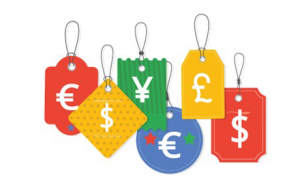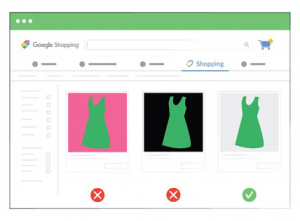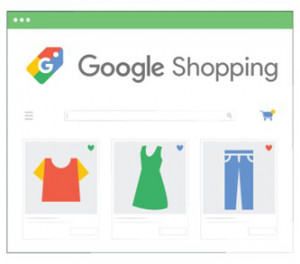By Melike Ulaman, Content Marketer at Prisync
Introduction to Google Shopping
Google Shopping has revolutionised the way online sellers showcase their products and reach potential customers. According to Statista, Google Shopping Ads drive over 75% of all retail search ad spend in the United States, highlighting its significance in the ecommerce landscape. By leveraging Google Shopping, sellers can tap into Google’s vast user base and display their products directly in search results, increasing visibility and driving sales.
Here is a list of benefits for product visibility and sales on Google Shopping:
- Enhanced visibility in Google search results
- Product images displayed directly in search ads
- Increased click-through rates (CTR) compared to text-only ads
- Targeted exposure to relevant and interested audiences
- Greater brand visibility and recognition
- Improved product discovery for potential customers
- Higher conversion rates due to the visual appeal and product details
- Access to Google’s massive user base and search traffic
- Cost-effective advertising with a pay-per-click (PPC) model
- Data-driven insights and analytics for campaign optimisation
Optimising Product Titles, Descriptions and Attributes
The importance of optimised product titles cannot be overstated. A study by SEMrush revealed that product titles with relevant keywords and attributes can improve click-through rates by up to 30%. For example, instead of a generic title like “Men’s Shoes,” a more effective title could be “Nike Air Max 90 Men’s Running Shoes – Black/White – Size 10.” This descriptive and keyword-rich title not only improves search visibility but also provides valuable information to potential buyers.
Compelling product descriptions and accurate attributes play a vital role in converting browsing shoppers into paying customers. Sellers can focus on highlighting unique selling points, benefits, specifications, and usage instructions in their descriptions while also ensuring accuracy in product attributes like size, colour, material, and dimensions.
When it comes to SEO and visibility on Google Shopping, using keywords strategically in titles is essential. Incorporate the keywords naturally into your titles to improve organic search rankings. However, avoid keyword stuffing, as it can make titles appear spammy and harm your visibility. Strike a balance between including keywords and maintaining readability and relevance.
Pricing Strategies for Google Shopping
Competitive pricing is a key driver of success on Google Shopping. Research from eMarketer indicates that 87% of online shoppers consider price as a crucial factor in their purchase decisions. Sellers should analyse market trends, monitor competitor pricing, and adjust their prices accordingly to remain competitive. Additionally, leveraging promotions such as discounts, free shipping, or bundle deals can attract buyers and increase conversion rates. The titles below are examples of top to-do while pricing on Google Shopping.

- Understanding competitive pricing in your niche
- Adjusting prices based on market trends and demand
- Using promotions and discounts effectively to attract buyers
Visual Optimisation with High-Quality Images
Visual appeal is a powerful tool for driving engagement and sales. Research by Shopify suggests that high-quality product images can increase conversion rates by up to 40%. Sellers should use professional-quality images that show their products from multiple angles and are zoomable for closer inspection. A/B testing different images can also reveal which visuals resonate best with the target audience, leading to improved click-through and conversion rates.
Visual appeal is a powerful tool for driving engagement and sales. Research by Shopify suggests that high-quality product images can increase conversion rates by up to 40%. Sellers should use professional-quality images that show their products from multiple angles and are zoomable for closer inspection. A/B testing different images can also reveal which visuals resonate best with the target audience, leading to improved click-through and conversion rates.

High-resolution product images play a crucial role in online shopping experiences. They showcase product features, textures, and colours accurately, which is especially important for items like clothing, electronics, and home decor. Maintaining high image quality without excessive compression is crucial for retaining detail and visual appeal.
Structuring Campaigns for Success
Creating structured product groups is important for achieving better targeting and optimisation in Google Shopping campaigns. By organising products into logical groups based on factors like product type, brand, price range, or performance metrics, advertisers can tailor their bids and ad content more effectively. This approach allows for more granular control over targeting, ensuring that ads are shown to the most relevant audience segments, which can lead to higher click-through rates and conversion rates.
Google Ads offers robust tools for optimising bids and budgets in Google Shopping campaigns. Features like automated bidding strategies allow advertisers to set specific goals, such as maximising conversions or achieving a target return on ad spend (ROAS).
Advertisers can use tools like Google Analytics and Google Ads’ built-in reporting features to monitor key metrics such as impressions, clicks, click-through rate (CTR), conversion rate, cost per acquisition (CPA), and revenue generated. By analysing these metrics over time, advertisers can identify trends, pinpoint areas for improvement, and make data-driven decisions to optimise their Google Shopping campaigns for better results and ROI.
Leveraging Reviews and Ratings
You can build trust and credibility with potential buyers. Retailers can encourage customers to leave reviews by sending follow-up emails after a purchase, offering incentives like discounts or loyalty points for reviews, and making the review process simple and user-friendly.
Showcasing positive reviews in Google Shopping listings can significantly impact a buyer’s decision-making process. Retailers can highlight glowing reviews in their product listings and create a dedicated section for testimonials on their website. Also, proactively addressing and resolving negative feedback is essential to maintaining a positive brand image on Google Shopping.

Mobile Optimisation for Google Shopping
Mobile optimisation is no longer optional—it’s imperative for reaching today’s mobile-savvy shoppers. Google reports that over 60% of searches now come from mobile devices. Sellers should ensure their Google Shopping listings are mobile-friendly, with responsive designs, fast-loading pages, and easy navigation. Testing and optimising for mobile performance, including checkout processes, can significantly impact conversion rates and overall sales.
This process involves several key strategies, such as:
- A/B testing to compare different elements such as ad copy, images, CTAs, and landing page designs to identify what resonates best with mobile users.
- Optimising loading speed by minimising unnecessary scripts and optimising images and code.
- Utilising Google Analytics to track mobile traffic, user engagement and conversion metrics to make informed decisions.
Advanced Tips and Strategies
Advanced strategies such as dynamic remarketing, cross-selling, and integrating Google Shopping with other marketing channels can further enhance results.
Stock and competitor tracking can help to successfully manage your Google Shopping store. By regularly monitoring stock levels and keeping an eye on competitor pricing and promotions, businesses can make informed decisions about their own pricing strategies and product availability. Utilising tools like Google Merchant Center’s competitive pricing insights alongside further analytics can help businesses stay competitive and optimise their product offerings.
Using Google Shopping’s dynamic remarketing campaigns can also help target customers who have shown interest in specific products, increasing the chances of cross-selling and upselling success.
Integrating Google Shopping with other marketing channels can amplify a business’s reach and impact. By syncing Google Shopping with platforms like Google Ads, social media channels, and email marketing campaigns, businesses can create cohesive marketing strategies that target customers across multiple touchpoints.
Conclusion
In conclusion, optimising your Google Shopping strategy involves a combination of best practices, data-driven decisions, and ongoing refinement. By focusing on pricing, titles, product descriptions, visual elements, campaign structure, reviews, mobile optimisation, and advanced strategies, online sellers can maximise their presence, attract more customers, and ultimately increase sales and revenue through Google Shopping. Continual monitoring, testing, and adaptation to market trends are key to sustained success in the dynamic ecommerce landscape.
Prisync is a competitor price tracking software for ecommerce companies of all sizes. The software lets you track competitor data such as product prices, price history, stock information, and more. It tracks unlimited competitors and automates pricing to solve B2B profitability problems on all sales channels.
Published 23/05/2024


